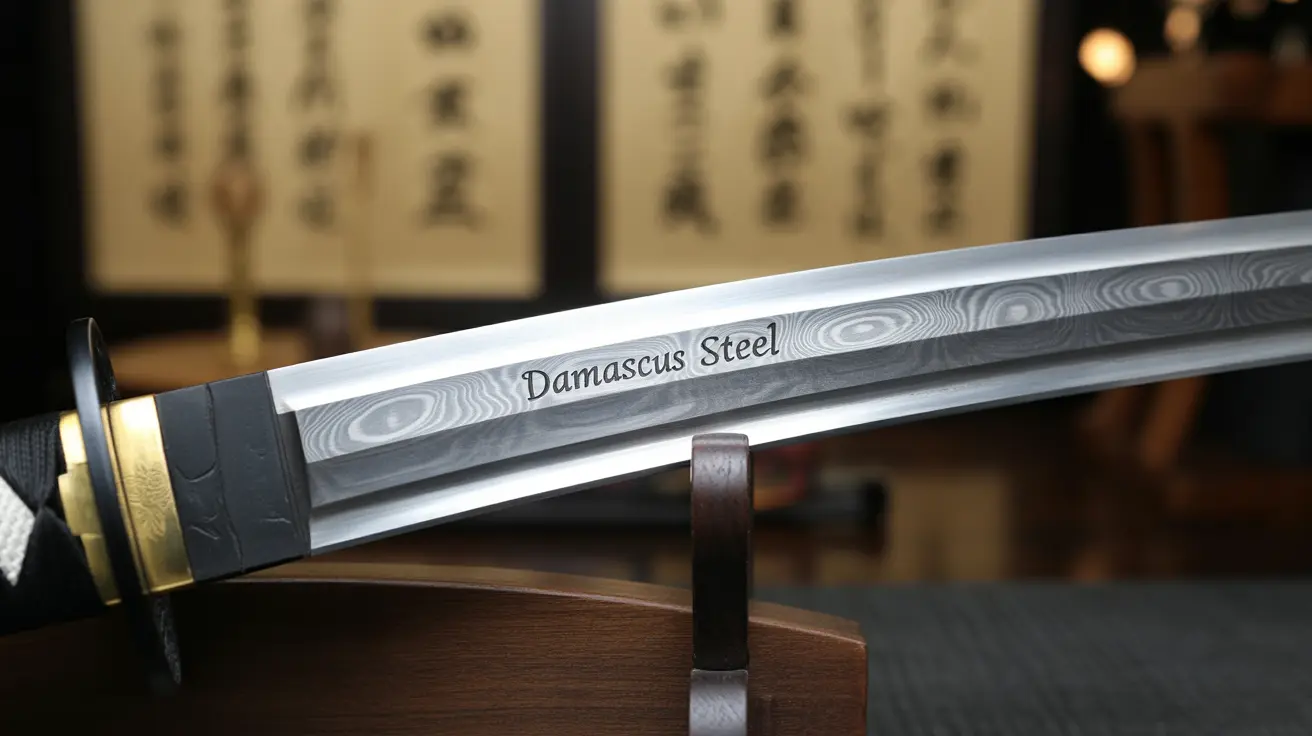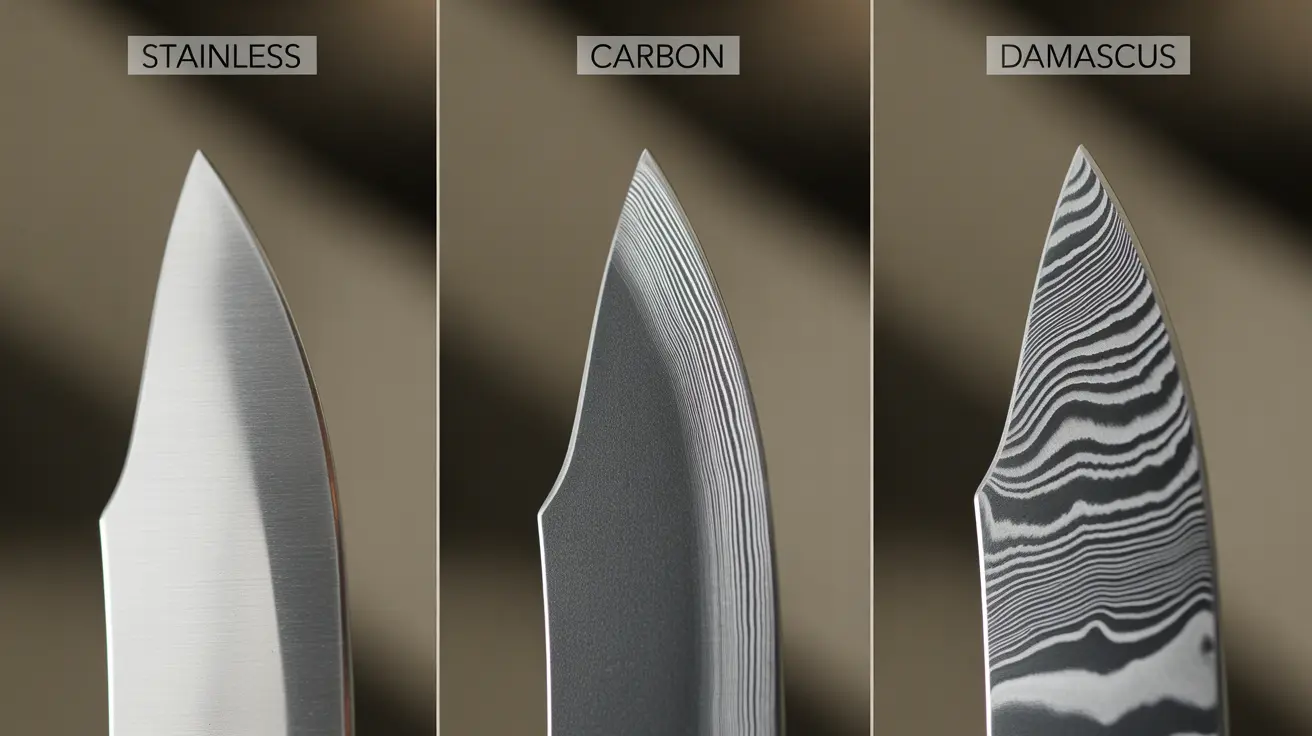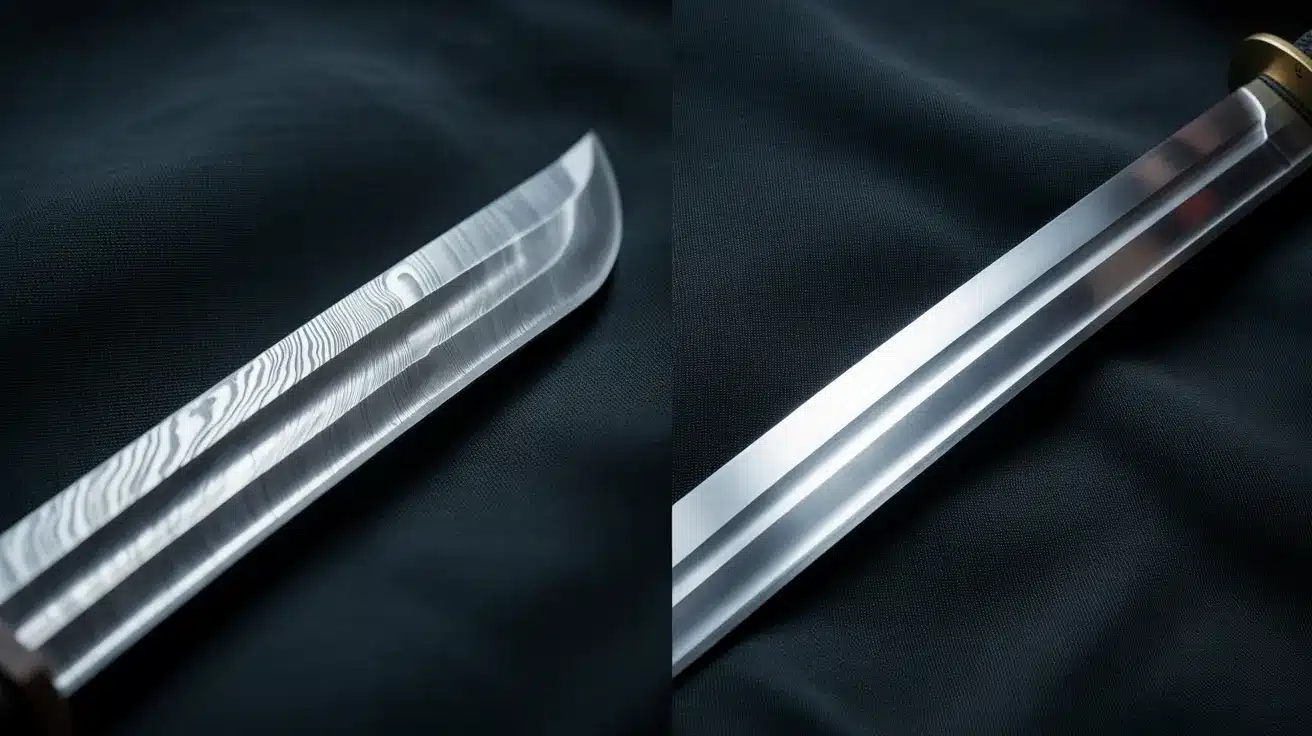Blog
Is Damascus Steel a Good Option for Katanas

Damascus steel has always carried a legendary reputation in the world of blades. Its flowing, wave-like patterns and tales of unmatched sharpness make it one of the most admired metals in history. On the other hand, the Japanese katana stands as a symbol of elegance, balance, and precision, a sword that has earned timeless respect for both its craftsmanship and cultural significance.
So why does it matter to ask: Is Damascus steel a good option for katanas? In today’s world, this question is more than just a relic of the past. Collectors seek rare and artistic swords, martial artists value strength and performance, and enthusiasts simply appreciate the connection to tradition and legend. Modern bladesmiths continue to experiment with Damascus steel, blending its beauty with the katana’s design. This article will explore whether Damascus steel truly enhances the katana or if tradition remains the stronger path.
What is Damascus Steel?
Damascus steel is one of the most famous materials in sword history, known for its beauty and mystery. It first appeared around the Middle East, with roots in Indian Wootz steel, which was traded and shaped into strong, sharp blades. These weapons became legendary for cutting power and toughness, inspiring stories that still live on today.
What makes Damascus steel unique is its striking appearance; blades exhibit flowing, water-like patterns or swirls, reminiscent of wood grain. These patterns come from the forging process, where layers of steel are folded and welded together. Due to this unique blend of history, strength, and beauty, Damascus steel remains highly admired even today.
What Makes a Katana Unique?
A katana is special because of the way it is made and how it performs. Traditional swordsmiths in Japan used unique forging methods, folding the steel many times. This removed impurities and created a strong yet beautiful blade with flowing patterns. Unlike many swords, the katana strikes a balance between sharpness and flexibility.
Its edge is exceptionally sharp, perfect for clean, precise cuts, while the spine of the blade is softer, allowing it to bend slightly without breaking. This mix makes it both deadly and durable. The curved shape also adds to its speed and ease of use. More than just a weapon, the katana is regarded as a symbol of skill, tradition, and the samurai spirit.
Ancient Origins and History:
The katana has its origins in ancient Japan, where sword-making grew alongside the rise of the samurai. Early Japanese Samurai swords were typically straight and exhibited influences from Chinese and Korean designs. As warfare evolved, swordsmiths created a curved blade that allowed quicker drawing and more effective movements in combat.
By the 14th century, the katana had become the samurai’s weapon of choice, worn with the edge facing upward for fast strikes. Beyond its use in battle, the katana came to represent the samurai’s honor and spirit. Over generations, master swordsmiths refined their techniques, turning the katana into both a practical weapon and a treasured symbol of Japanese culture.
Difference between Damascus and traditional Japanese steel
Damascus steel and traditional Japanese steel are both admired, but they are distinct in their characteristics. Damascus steel is renowned for its distinctive wavy patterns, achieved through the layering and welding of different steels together. Its main appeal today is beauty and uniqueness. Traditional Japanese steel, known as tamahagane, is produced through a specialized smelting process and carefully folded to remove impurities.
This gives the katana a hard, sharp edge with a flexible core, perfect for battle. While Damascus focuses on striking looks and strength, Japanese steel emphasizes balance, sharpness, and reliability in real-world use. Both are legendary in their own way.
Stainless VS Carbon VS Damascus Steel:
Stainless steel, carbon steel, and Damascus steel are all popular choices for blades, each with unique qualities. Stainless steel is low-maintenance because it resists rust, however, it can be more challenging to sharpen. Carbon steel, on the other hand, can achieve a very sharp edge and hold it longer, but it requires regular care since it rusts easily.
Damascus steel is admired for its distinctive wavy patterns and the balance of strength and beauty. Made by layering or folding different steels together, it offers both hardness and toughness. Ultimately, the best option depends on your priorities, easy maintenance, long-lasting sharpness, or a striking appearance.
Advantages of Damascus Steel Katanas
Damascus steel katanas are prized for their distinctive wave-like patterns, exceptional sharpness, and exceptional durability. Each blade is unique, showing fine craftsmanship and beauty. By blending tradition with modern techniques, these katanas offer both practical use and artistic appeal for collectors and users.
1. Unique Aesthetic Appeal
Damascus steel katanas are famous for their beautiful wave-like patterns on the blade. Each design is natural and unique, giving the sword a special artistic look that makes it stand out as both a weapon and a masterpiece.
2. Edge Retention and Hardness
Due to the layered structure of Damascus steel, these katanas remain sharp for an extended period. They are strong, reliable, and perfect for smooth, clean cuts, making them useful for martial arts enthusiasts, collectors, or display purposes.
3. Craftsmanship, Variety, and Innovation
Damascus katanas show the creativity and skill of sword makers. Different folding methods and designs give each blade a unique style. Collectors and fans enjoy the wide range of patterns, finishes, and innovative touches available today.
4. Modern Adaptations
Modern Damascus steel katanas blend traditional craftsmanship with modern technology. Today’s makers utilize advanced methods to enhance strength and sharpness while preserving classic patterns, resulting in blades that are both practical and aesthetically pleasing to own.
Disadvantages of Damascus Steel Katanas
Damascus steel katanas, while beautiful, have some drawbacks. Their quality can vary depending on the maker, and they need more care to avoid rust. Some blades may be brittle compared to tamahagane, and marketing often exaggerates their strength, causing misunderstandings.
1. Inconsistencies in Quality
The quality of Damascus steel katanas can vary greatly. Some blades are primarily designed for appearance, rather than strength, resulting in weaker performance. Without careful selection, buyers might end up with a sword that looks beautiful but lacks durability and reliability.
2. Higher Maintenance Requirements
Damascus steel katanas require regular cleaning and oiling to prevent rust and keep their shine. Unlike stainless steel, they need more attention. For people who prefer low-maintenance blades, this extra care can feel inconvenient or time-consuming.
3. Potential Brittleness Compared to Tamahagane
While strong and sharp, Damascus steel katanas may be more brittle than traditional tamahagane swords. If not forged carefully, they can chip or crack under heavy use, making them less dependable for real combat or frequent practice.
4. Misconceptions and Marketing Hype
Many sellers exaggerate the qualities of Damascus steel, claiming it is unbreakable or consistently superior in quality. These claims can mislead buyers. While Damascus katanas are beautiful and practical, they are not perfect, and understanding their actual limitations is crucial.
Alternative to Damascus Steel:
Two common alternatives are stainless steel and carbon steel. Stainless steel katanas resist rust, need little care, and look great for display. Carbon steel katanas hold a sharper edge and perform better in practice, though they require more maintenance to prevent rust.
Stainless Steel
Stainless steel katanas are popular because they resist rust and need little maintenance. They have a bright, attractive shine, making them excellent for display. However, they are less durable for heavy practice, so they are better suited for collectors or decorative purposes.
Carbon Steel
Carbon steel katanas are known for excellent sharpness and edge retention. They perform well in cutting practice and feel closer to traditional swords. The downside is that they rust more easily, so they require regular cleaning and oiling to remain strong and reliable.
Choosing the Right Katana for Your Needs
Choosing the right katana depends on your purpose. Collectors enjoy artistic blades, gifts shine with stainless steel, martial artists need strong carbon steel, decorators prefer display swords, and cutting practice requires sharp, durable blades. Pick what suits you best!
1. For Collectors
Collectors often prefer katanas with beautiful designs, fine craftsmanship, and cultural value. Damascus steel or traditionally made blades are good choices. These swords are not only weapons but also treasured works of art that reflect Japan’s rich history and tradition.
2. For Gifts
A katana can be a meaningful and unique gift. Stainless steel swords are affordable, shiny, and easy to care for, making them perfect for display. Adding engravings or custom details makes the gift even more personal and memorable.
3. For Martial Arts Practitioners
Martial artists need katanas that are strong, sharp, and comfortable to use. Carbon steel blades are ideal because they hold an edge and feel close to traditional swords. Choosing the right weight and balance ensures safe and practical training.
4. For Decorative Purposes
For decoration, stainless steel katanas are the best choice. They do not rust easily, shine beautifully, and are less expensive. While not made for heavy use, these swords serve as striking display pieces that bring elegance and tradition to any room.
5. For Cutting Practice (Tameshigiri)
For cutting practice, a sharp and durable blade is essential. High-carbon steel katanas are the most effective, as they cut targets smoothly and retain their strength with use. Proper craftsmanship, balance, and weight make training safer and more effective.
How to tell if a Damascus katana is real?
A genuine Damascus katana exhibits natural, flowing wave-like patterns that extend deep into the blade, not merely printed or etched on the surface. Each pattern is unique and doesn’t repeat perfectly. Genuine Damascus steel also feels strong and well-balanced, unlike cheap replicas.
Trusted makers provide details about forging methods and materials used. Price is another indication that authentic Damascus katanas typically cost more due to the skill and time required to create them, whereas fake versions are often significantly cheaper.
Does Damascus steel affect katana sharpness?
Damascus steel itself does not automatically make a katana sharper. Sharpness primarily depends on the blade design, edge angle, and the skill of the swordsmith in crafting the edge. However, Damascus steel can help the blade retain its edge longer due to its layered structure.
This provides a balance of hardness and flexibility, making the katana both durable and sharp. With proper forging and care, a Damascus steel katana can be very practical, though sharpness still relies on skillful craftsmanship.
Final Thoughts:
Is Damascus steel a suitable choice for katanas? It really depends on what you want. Damascus katanas are beautiful, unique, and show excellent craftsmanship, making them perfect for collectors and display. Traditional Japanese steel, such as tamahagane, emphasizes balance, sharpness, and practical performance, which martial artists often prefer.
Modern alternatives, such as carbon or stainless steel, offer distinct benefits, ranging from sharpness to low maintenance. Ultimately, selecting the right katana depends on your needs, whether it’s for cutting practice, decoration, collecting, or honoring tradition. Both Damascus and traditional steel have their own unique qualities, so the best choice is the one that aligns with your purpose and passion.



